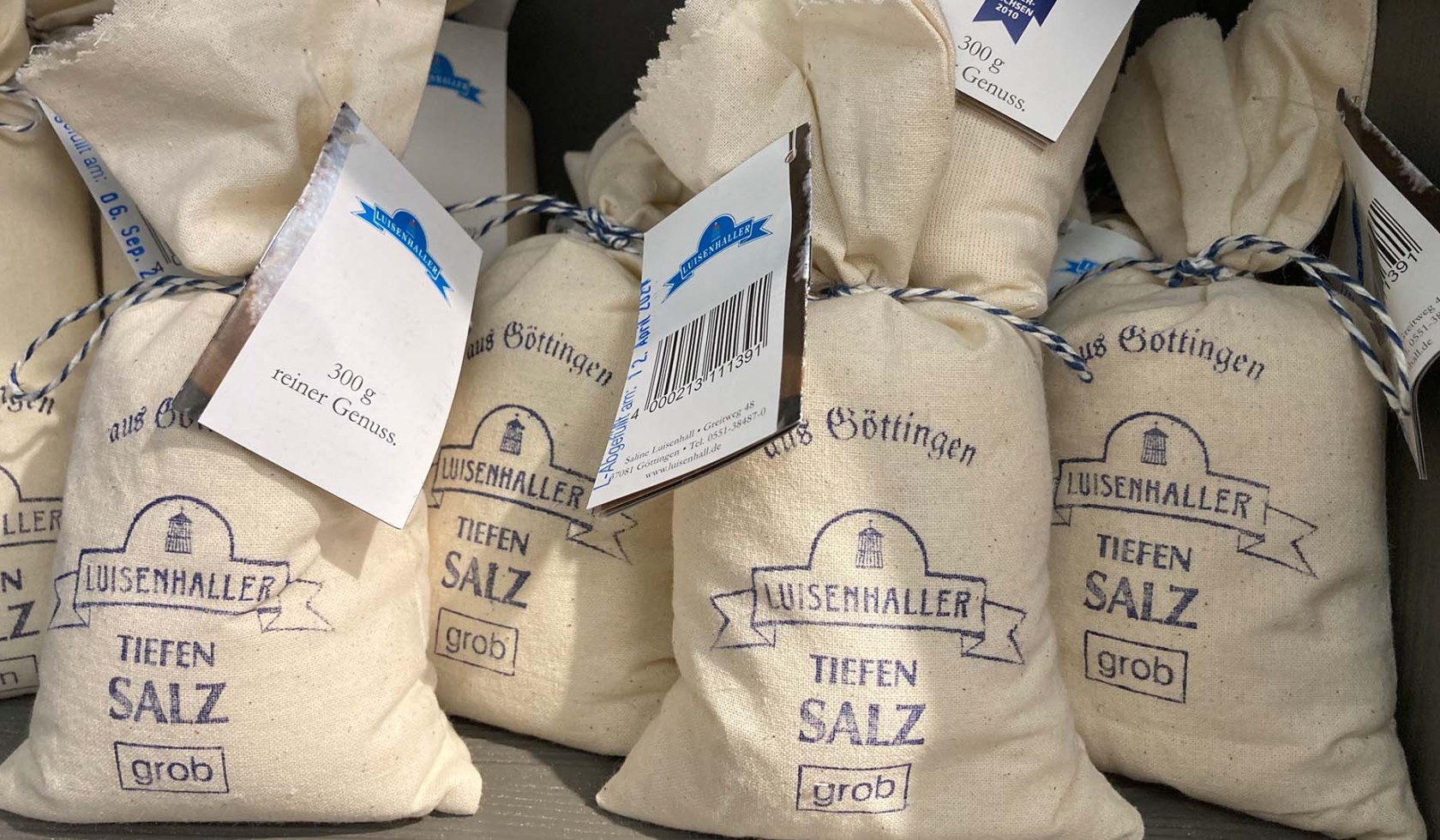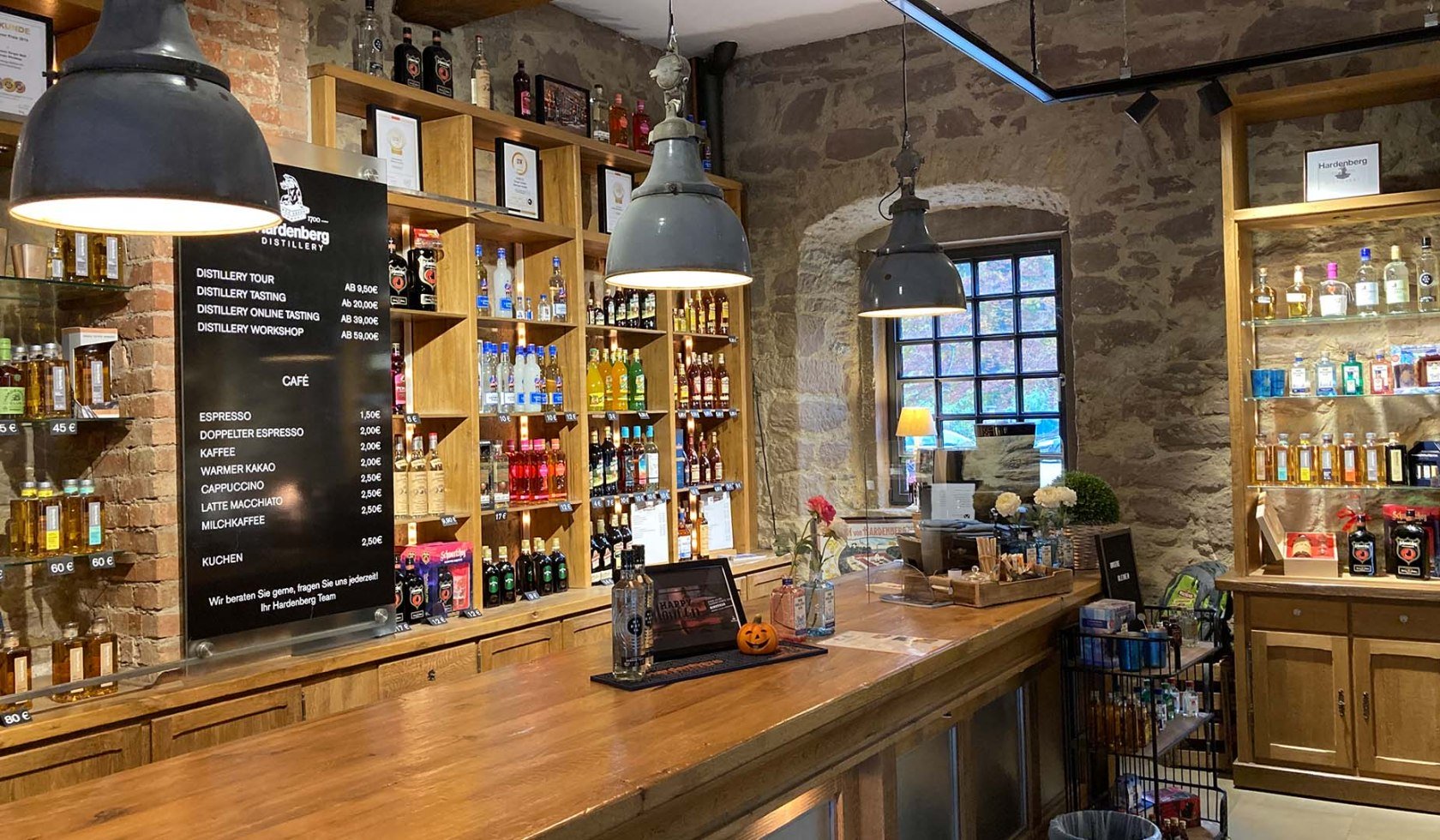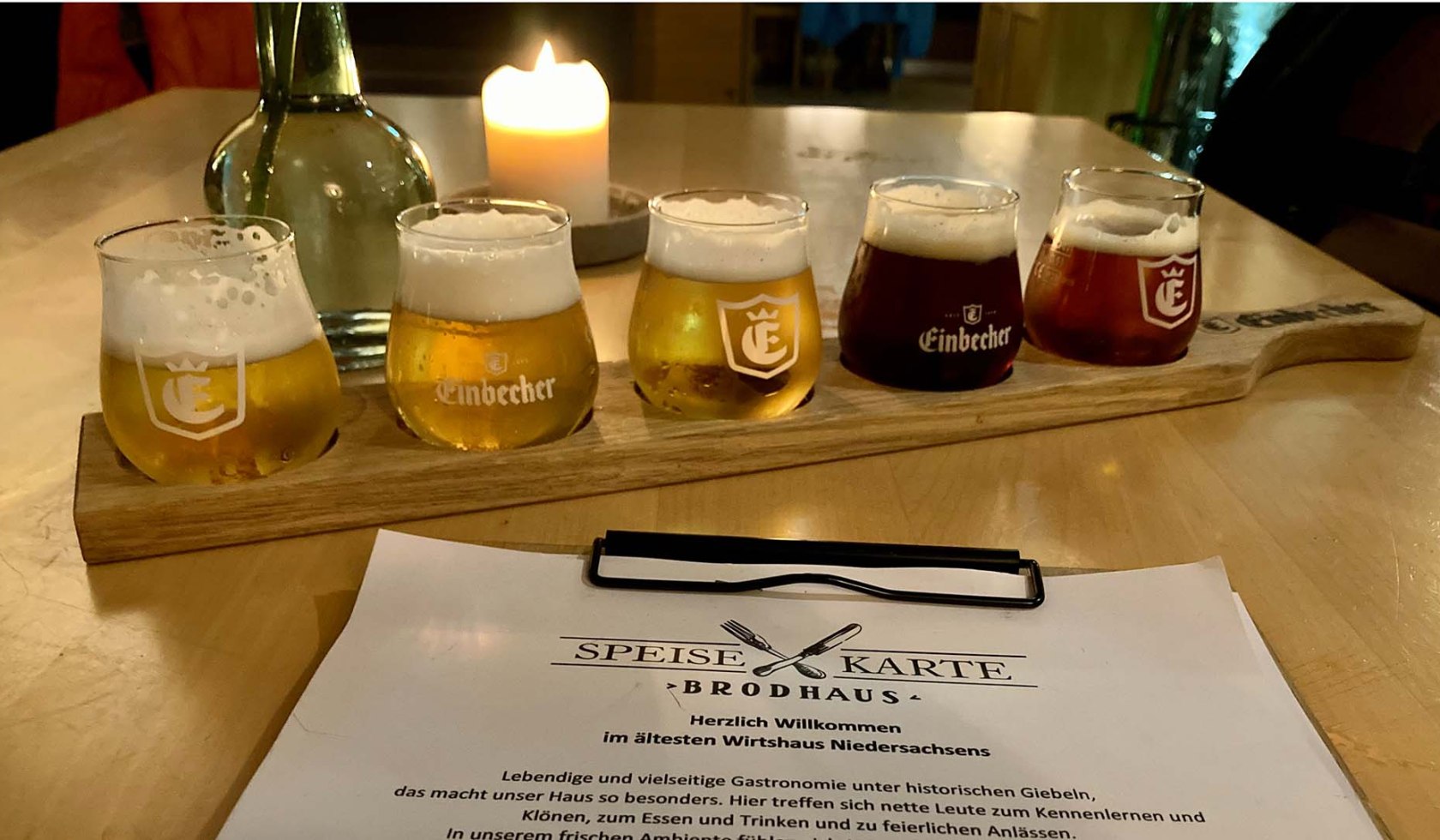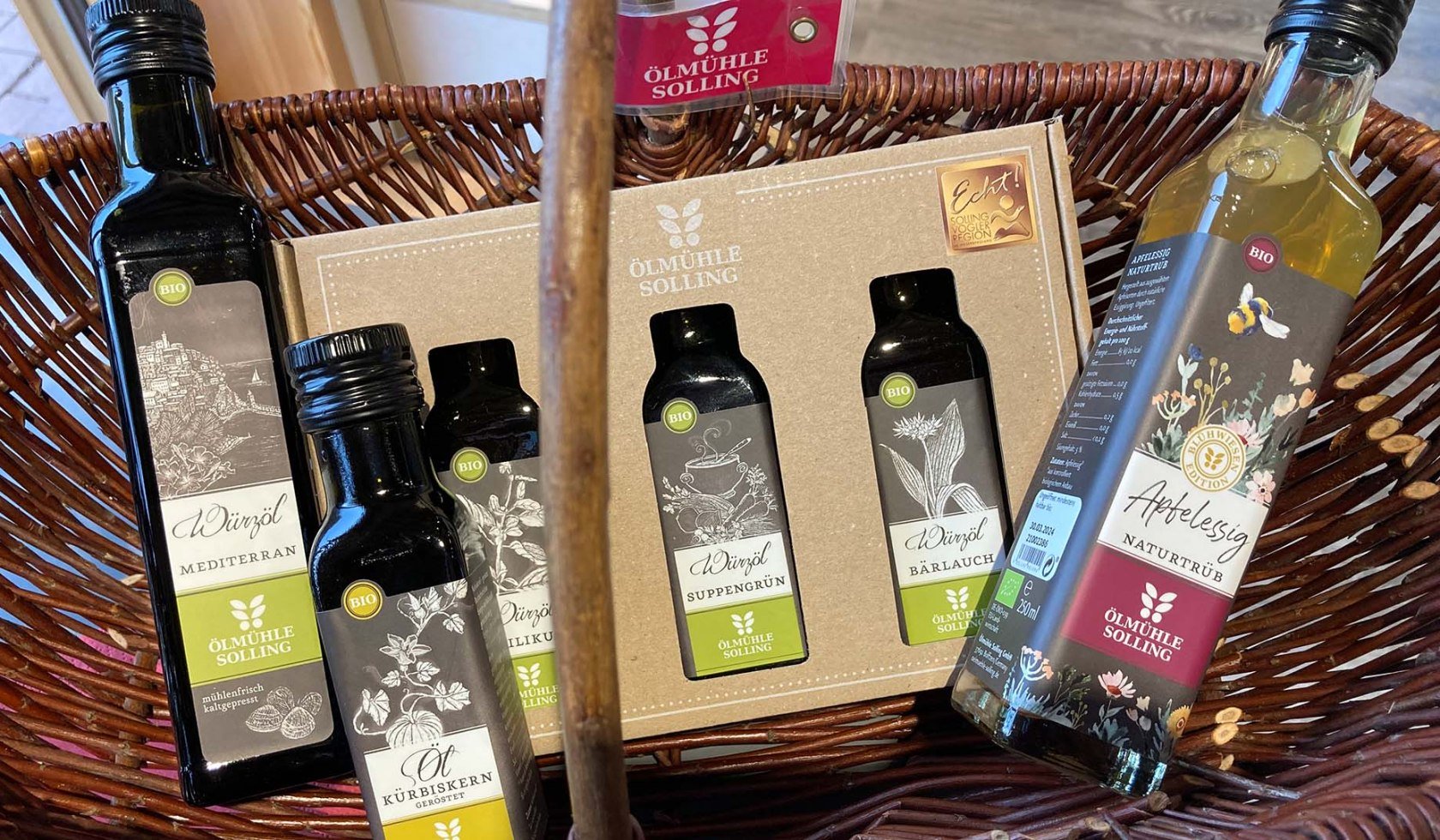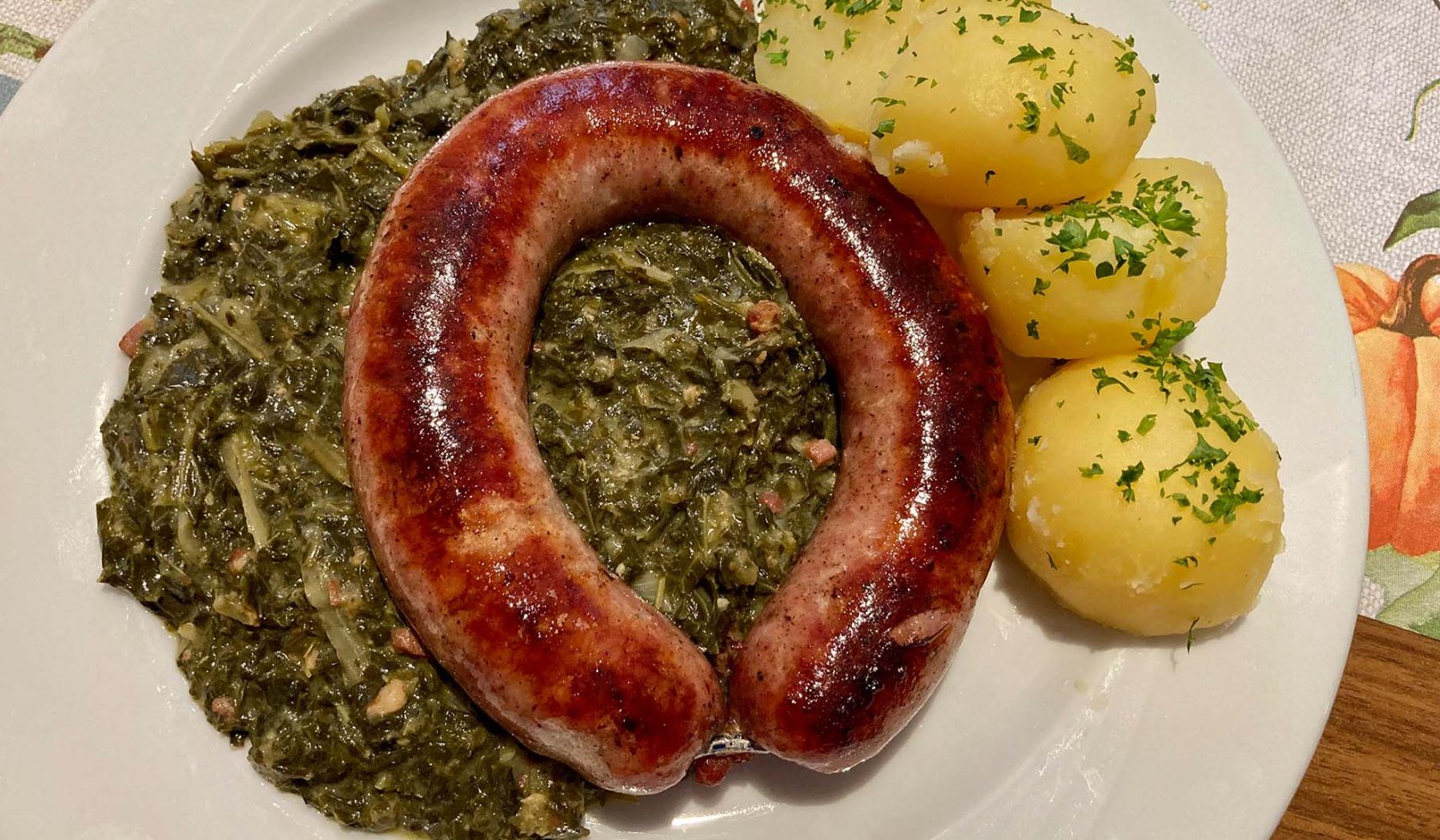Niedersachen´s (Niedersachsen (Lower Saxony)’s) southern tip is nestled between the Harz mountains, the Solling hills, the Leine river and the Weser river. Besides characters of fairy tales, legend and myth and pretty little half-timbered towns, there’s a whole host of culinary delights to discover here – from traditional dishes such as kale and Peker to beer and salt steeped in history, right through to modern fare. What is typical of the region and what food and drink specialities are served? Join me on a culinary road trip through southern Niedersachsen.
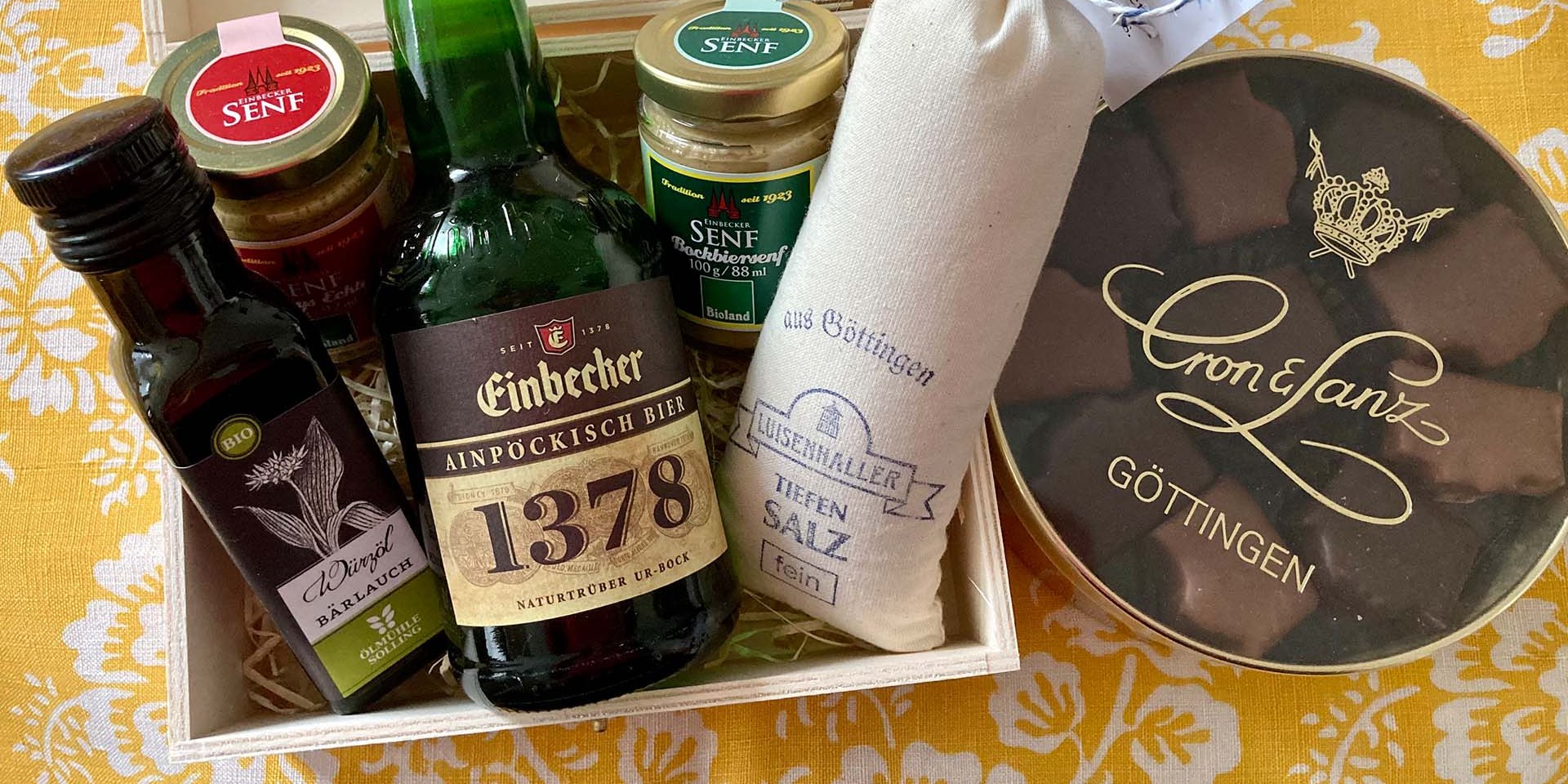
Göttingen: Salt and Baumkuchen steeped in history
The weekend in southern Niedersachsen begins in Göttingen. This university town with its ‘Goose Girl’ fountain is the region’s most famous city. What many don’t know is that not far from the city centre lies Europe’s only remaining pan salt works, where salt is still produced according to traditional methods from 150 years ago. It sees the light of day as concentrated brine from a depth of 450 metres, and guided tours demonstrate how this brine is turned into salt. Luisenhaller Deep Salt is a popular souvenir and I too pop it in my shopping basket. My tip: Saline Luisenhall also features a bath house, and the saltwater bath is a wonderful place to relax.
But before I move on, I want to try another Göttingen speciality. Established almost 150 years ago, Cron & Lanz is one of southern Niedersachsen (Lower Saxony)’s most traditional pastry shops and is famous for its fine cakes and chocolates, but especially for its Baumkuchen – a distinctive type of layer cake. I tuck into a slice made to a traditional recipe over a cup of tea, and of course also grab some to take home.
Nörten-Hardenberg: Corn schnapps with history
The little town of Nörten-Hardenberg is only a ten minute drive from Göttingen and is just as rich in tradition. The town is built around the 1000 year-old castle ruins, owned by the von Hardenberg family since the end of the 13th century. Hardenberg corn schnapps with its boar’s head logo (Hardenberg Korn mit dem Keilerkopf) is known far beyond this little place and is one of the specialities from southern Niedersachsen. The corn distillery, which was founded in 1700, has been extended in recent years to form the modern Hardenberg Distillery, and now also produces whiskey and gin as well as the traditional corn schnapps. I take a tour and get to look at the production behind the scenes, passing old oak casks and the new copper stills, and even have the opportunity to sample the various specialities in a tasting session.
But I have to carry on, so I give the tasting a miss. Instead, I take a walk through the Count’s country estate and the autumnal castle grounds. But for those who’d rather do the tasting and not drive after all the hard liquor: the Hardenberg Burghotel is a five-star venue offering overnight accommodation with a historical ambience.
Einbeck: Beer tradition and mustard
The historical theme continues in Einbeck. The town is famous for its beautifully preserved half-timbered buildings, and so I start with a stroll through the streets. My destination is bang in the historical town centre: the Einbecker Brewery. A tour of the brewery takes in the old vaults. We pass the brewing copper and filtration on our way to the bottling plant, where the Einbecker beer is bottled. Einbeck is famous for its bock beer, which can of course be sampled all over town. I opt for the Brodhaus at the Marktplatz. This is the oldest pub in Niedersachsen (Lower Saxony), and I’m served five freshly drawn beer varieties to sample. Next I follow the beer trail through the town centre and learn a bit more about Einbeck and its beer. And incidentally, even Till Eulenspiegel – a picaresque folk legend from late medieval Germany – tried his hand as a brewer. The fountain at the Marktplatz serves as a reminder of his stories.
Einbeck is not only known for its beer, but also for its mustard. The Einbecker mustard mill is also located in the historical old town. Since 2010 it has reverted back to the stone grinding method, which was used to make mustard in Einbeck from 1923 until the fifties. I sample the different varieties and pop a jar of bock beer mustard in my shopping basket.
Boffzen: Organic oils from the Solling hills
My next stop is the little town of Boffzen in the Holzminden district, which lies just before Höxter on the Weser river and the border with North Rhine-Westphalia. The Baensch family has been producing organic cooking oils and delicacies in its Solling oil mill for 25 years now. I poke around the mill shop and pop a little bottle of wild garlic infused oil in my basket. Both the wild garlic and the rapeseed oil come from organic farms in the Weser Uplands. That’s why it bears the ‘Echt!’ or ‘Authentic!’ quality seal of the Solling-Vogler region, which is given to traditional products typical of the region. Products from the Solling oil mill have also received multiple awards as Culinary Ambassadors for Niedersachsen.
Bodenfelde: A journey through time with aurochs
The next stop on my culinary road trip through southern Niedersachsen is Bodenfelde. In the forests around this little town on the Weser, one of the biggest projects of its kind in Germany has been running since 2000, when Heck cattle and Exmoor ponies were introduced to the Solling-Vogler Nature Park to maintain the oak forest as in centuries gone by. The Heck cattle arose by back-breeding the aurochs, a primitive wild ox which became extinct in the 17th century, and they now live here on over 200 hectares of woodland pasture. Visitors can take various paths through the over 250 year-old forest and might be lucky enough to spot one of the 60 animals.
Their meat, which is particularly flavoursome thanks to their grazing in the woodland pasture and the herbaceous meadows, can be sampled from September to November at the ox festival. This is when various restaurants and butchers in the region have this rare beef specialty from Niedersachsen on the menu. I buy some auroch salami and auroch ham at the Landfleischerei Schafft butchery in Bodenfelde to try it.
Uslar: Peker potatoes and kale with Bregenwurst
The last stop on my culinary road trip through southern Niedersachsen is the little town of Uslar in the Solling hills. The local speciality here is Peker, a simple dish of baked potatoes, fresh pork mince and onions. Originally the meal of paupers, today it is celebrated every September at the Peker market in the historical old town, where you can sample this traditional regional dish at various stalls.
I’m a little late for the Peker meal and instead opt for another classic Niedersachsen speciality. Kale is on almost every menu in the north in autumn and winter. However, here in the Solling hills it is traditionally served with Bregenwurst sausage rather than Pinkel smoked sausage or Kassler pork chops, as is the case elsewhere in Niedersachsen. I end my culinary road trip through southern Niedersachsen by tucking into this hearty winter meal.
In her travel blog My Happy Places Britta takes readers to her favourite places around the globe. Whether a short stay, city break, road trip or micro adventure on her doorstep – the stories on My Happy Places offer inspiration and lots of ideas and tips for your next trip.



